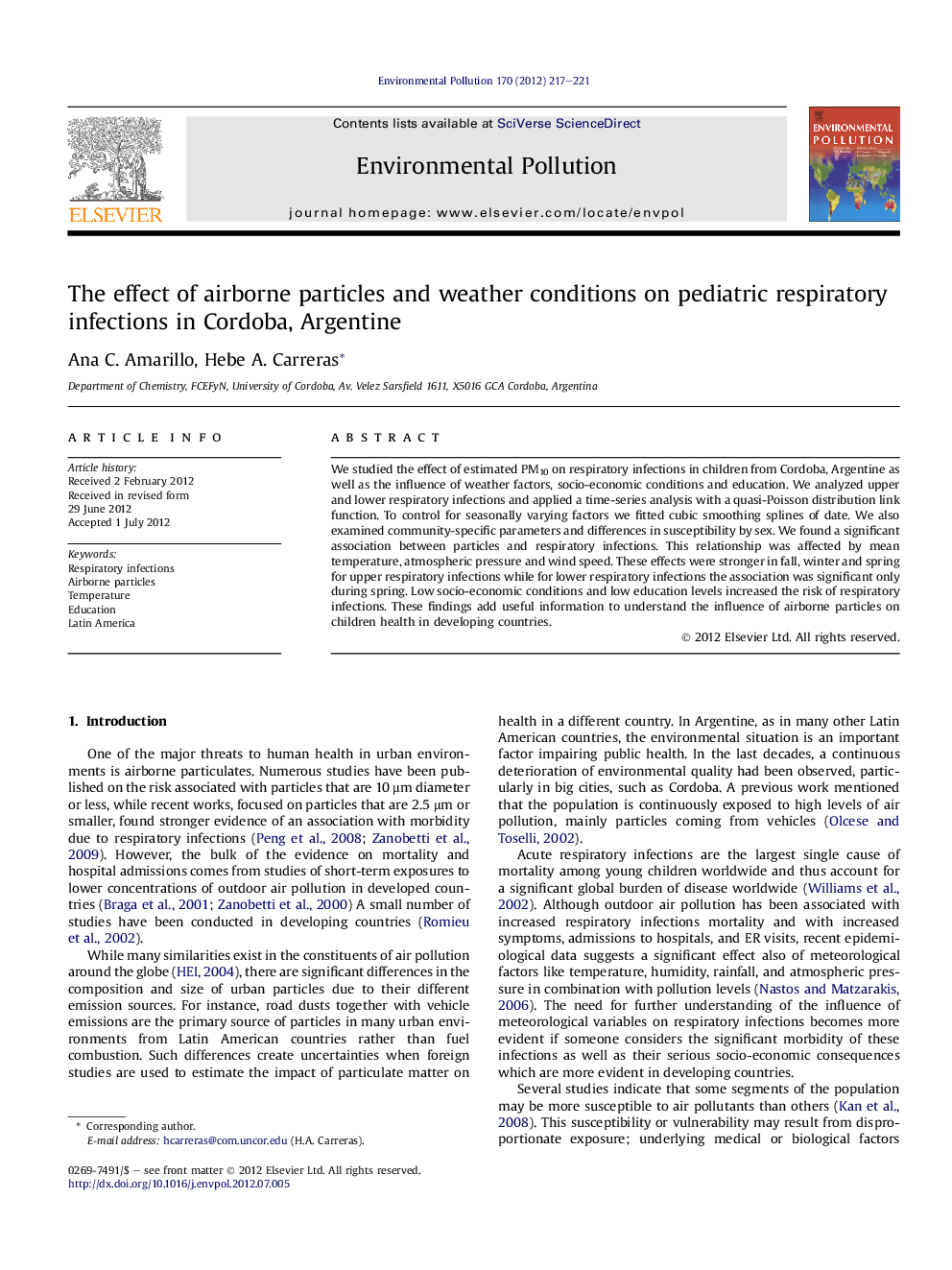| Article ID | Journal | Published Year | Pages | File Type |
|---|---|---|---|---|
| 4424773 | Environmental Pollution | 2012 | 5 Pages |
We studied the effect of estimated PM10 on respiratory infections in children from Cordoba, Argentine as well as the influence of weather factors, socio-economic conditions and education. We analyzed upper and lower respiratory infections and applied a time-series analysis with a quasi-Poisson distribution link function. To control for seasonally varying factors we fitted cubic smoothing splines of date. We also examined community-specific parameters and differences in susceptibility by sex. We found a significant association between particles and respiratory infections. This relationship was affected by mean temperature, atmospheric pressure and wind speed. These effects were stronger in fall, winter and spring for upper respiratory infections while for lower respiratory infections the association was significant only during spring. Low socio-economic conditions and low education levels increased the risk of respiratory infections. These findings add useful information to understand the influence of airborne particles on children health in developing countries.
► Few information is available on children respiratory health from developing countries. ► We modeled the association between PM10 and children's respiratory infections. ► We checked the influence of weather factors, socio-economic conditions, education and sex. ► Temperature, pressure and wind speed modified the effect of particles. ► Low socio-economic conditions and low education levels increased the risk of infections.
